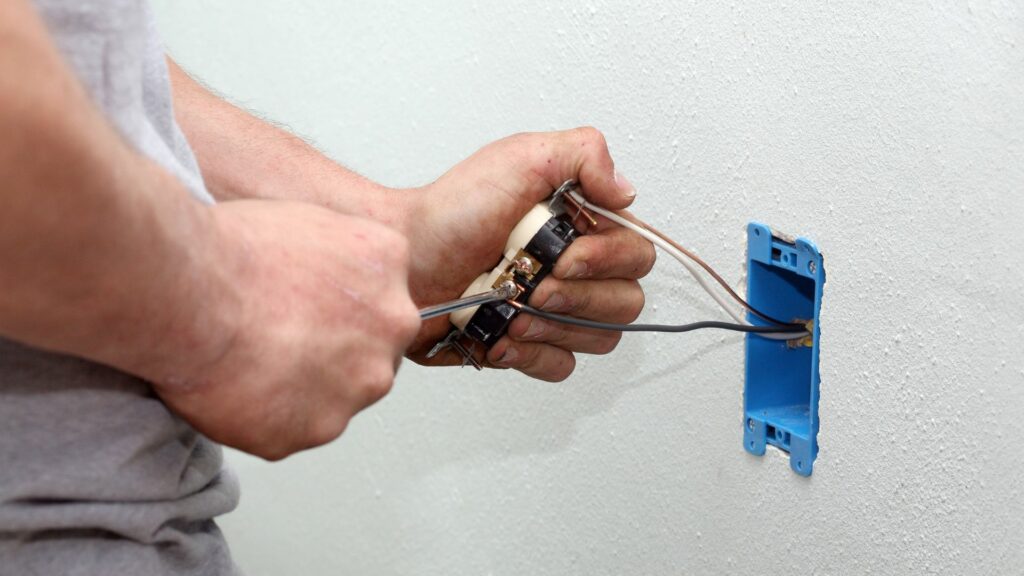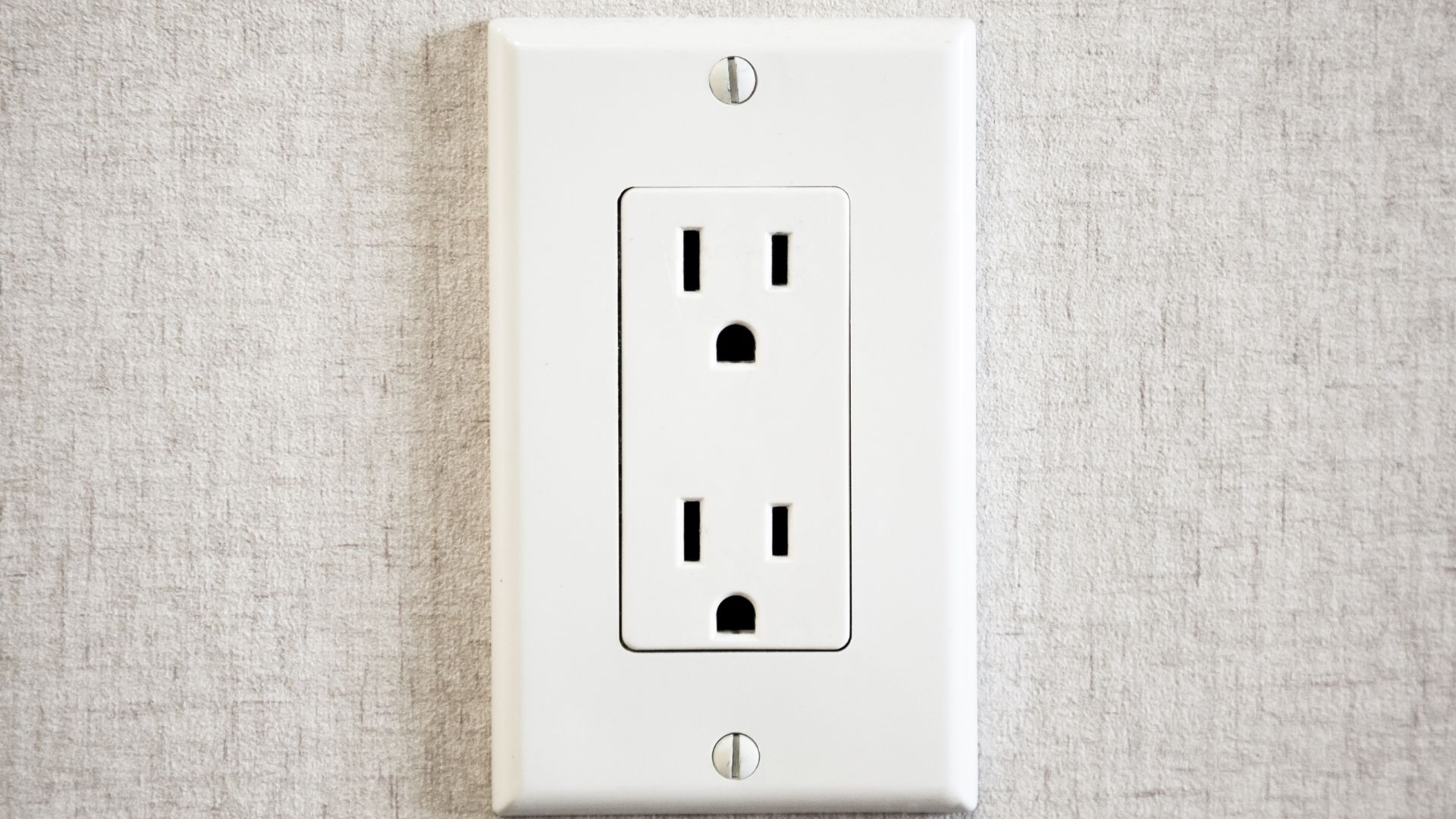People with outlets with two hot wires are always looking for a single definitive explanation. However, multiple factors can explain the presence of two hot wires in an outlet, including:
1). US Circuits
Circuits in the United States are somewhat unique. People think homes in the US can only access 120 volts, but that is not true. A brief inspection of a circuit in a US residential setting will reveal two hot wires. But why?
A conventional circuit has a hot wire that brings the power to the appliance and a neutral line that takes that power back to the source. This completes the circuit. But because North America uses split phase power, the average home has two hot wires and a neutral.
A multimeter will show you that each coil has 120V. Taking the readings between these two wires will reveal 240V. You use those 240 volts to run heavier appliances. Otherwise, the 120v found in each hot wire will operate ordinary household equipment.
This configuration is convenient because you save money on wires and labor since one cable has two hot wires that share a single neutral.
2). Daisy-Chain
Who installed your outlets? If you hired a contractor, call them and find out if they daisy-chained the outlets. This matters because daisy-chaining uses two wires. Many contractors use the same wiring to operate multiple outlets in a series circuit.
To be specific, you need multiple hot wires. One black wire brings the power to the outlet, while a second black wire carries the power onward to the next outlet. This continues until you get to the end. If the outlet in question is in the middle of the circuit, you will see four wires: two of them black and the others white.
You may also notice an additional wire. Some outlets have as many as six lines. The ground is either green or bare, depending on your location. Don’t count on the colors to tell you what each conductor does.
The color codes will change depending on the location. Therefore, you may accidentally assume that every black wire in the outlet is live when, in truth, your country uses black and red for the neutral and ground. Talk to a local contractor before you proceed.
3). Switched Outlet
Have you heard of switched outlets? This duplex outlet has one section that is always on and a second section you can turn on and off with a wall switch. These so-called half-hot receptacles have two hot wires, one black, and the other red.
Although depending on where you live, you may see two black wires. The unique nature of a half-hot outlet (one side permanently on and the other side controlled by a switch) makes two hot conductors a necessity.
The hot wires share a neutral wire. Confirm that you have a half-hot receptacle before consulting an expert. Don’t tamper with these devices unless you have technical expertise. Most laypeople are only accustomed to handling one hot wire.
4). Contractor Simply Made A Mistake
Don’t assume that two hot wires in an outlet always serve a purpose. You may spend hours looking for the objective the second line serves when, in truth, your contractor simply made a mistake. Some electricians will unintentionally install a three-conductor wire.
This is why it is essential to consult the person who installed the outlet. Find out why they included a second hot wire. If the second line serves a purpose, the expert will let you know. If it doesn’t, the contractor will tell you. They will also encourage you to place a cap on the second hot conductor to make it less dangerous.
You should do this for live wires after testing them. In some cases, the contractor will leave the second line in place because it’s dead. Therefore, it isn’t a threat to your well-being or the integrity of the circuit.
Are You Sure the Outlet Has Two Hot Wires?

Are you talking about multiple outlets in the same section of the wall or one outlet?
If you’re talking about two wires behind one outlet, did you test them with the correct tool? Again, colors don’t mean the same things in every location. So maybe you confused a neutral wire for a second hot wire because they both have the same color.
I have to warn you about the phantom voltage that digital meters can record. You can easily record 120V on every wire if you misuse the tester. Confirm that you have two hot wires by talking to an expert. Ask them to confirm your suspicions by testing the wires with their instruments.
What Happens If You Connect 2 Hot Wires?
Nothing will happen. People connect two hot wires in the same circuit all the time, especially in countries associated with 120V power supplies. They use two hot wires to make 240V available. The hot wires will only present a challenge if you connect them to the wrong terminals.
The hot wires from different circuit breakers can create complications if you connect them. Expect a short. Additionally, throwing a GFCI into the mix can lead to a trip. But these challenges won’t manifest if you know what you’re doing.
How To Wire An Outlet With Two Hot Wires?
This process is not as complex as you think. Get a 220V cable. It has two hot wires. Attach the two hot wires to the screws on the outlet. Once they are secure, connect the ground wire.
This assumes that you de-energized the circuit beforehand. You don’t want to handle hot wires on a live circuit. What if you’re trying to install an outlet in the middle of a series circuit? The process is the same. Run hot wires to the brass terminals. The order doesn’t matter.
Safety Tips While Wiring 2 Hot Wires
- De-energize the circuit. Don’t install live wires when the circuit has a current running through it.
- Test the panel for power before proceeding.
- Label all the wires to prevent confusion.
- Read the local code. You should also consult any documentation you find regarding the color codes in your area. You don’t want to misinterpret the colors.
- Use wires of the correct gauge.
- Use insulated tools.
- Replace frayed lines.
- Replace defective receptacles.

